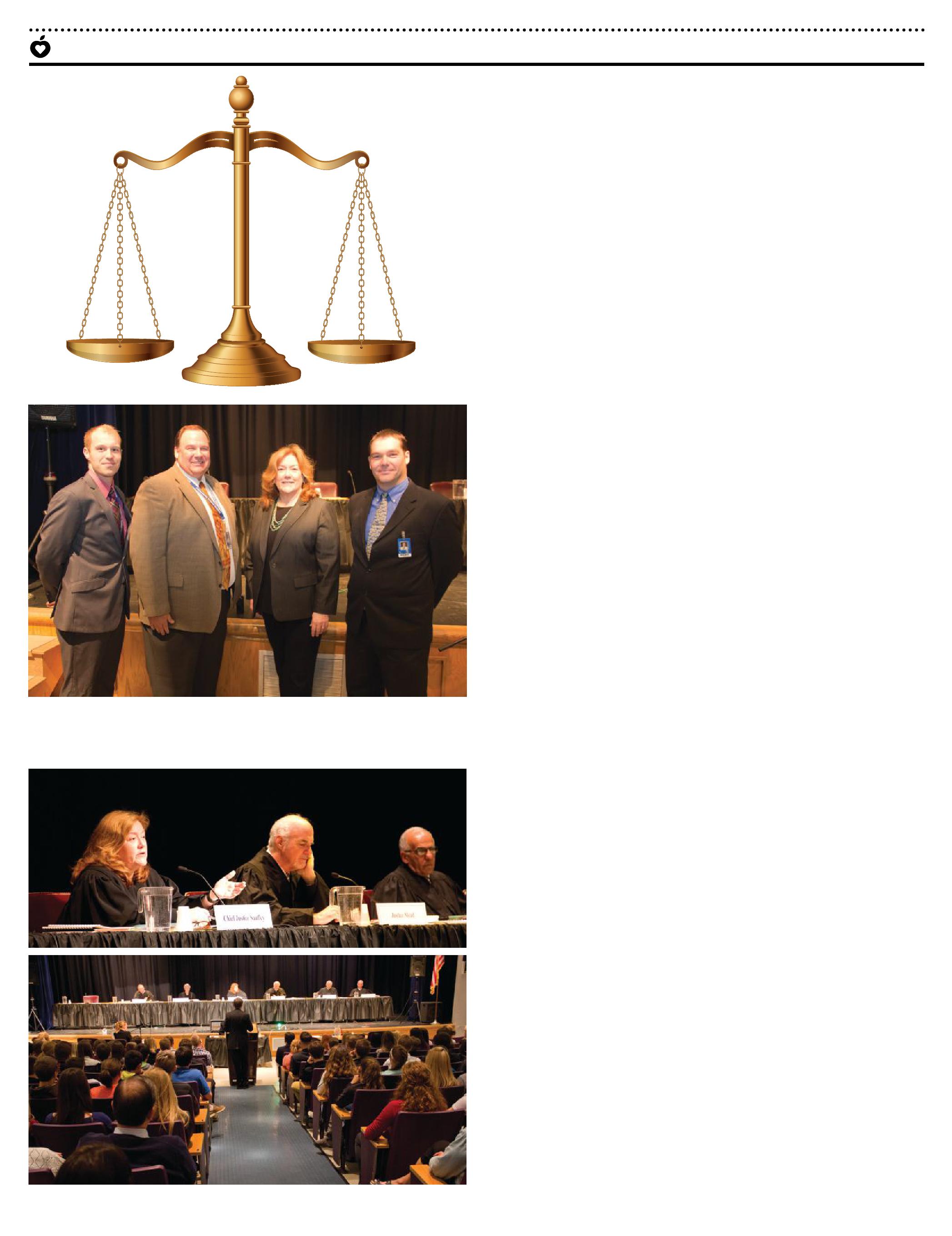
2 minute read
Law & Order
“Students gets to see formal debate and questioning.” - Jesse Hargrove (Hermon TA) pictured (far right) with Chief Justice Leigh Saufley, Brian Walsh (Hermon HS Principal), and Micah Grant (Hermon HS Asst. Principal). From the high school auditorium in Hermon, Maine’s highest court came to order with three cases on the docket. The first case involved a defendant who claimed the wire-tap that caught him selling drugs was constitutionally illegal, the latter two were DUI cases. The three cases kept more than 300 high school students engaged.
“This is Maine and what’s happening today in this court is real life— it’s connecting to everyone in our town and in our community. It’s inspiring to see lawyers up there because that’s what I want to do,” said student Julia Gagne.
Despite the typical high school stage, curtains and auditorium seating, everything about the Supreme Court was true to form— down to the security detail guarding the Justices. The attorneys for each side presented their arguments and the Justices responded with rapid fire questions, all while the students listened closely. The major difference in the courtroom drama came when the arguments ended and the justices left the room. During the break, in between each of the three cases heard, students asked questions of the attorneys both about the arguments made and the cases themselves. Hermon High School Social Studies teacher Jesse Hargrove (Hermon TA) arranged for the Court to come to his school as a way to provide his students with a unique opportunity to learn about the Judicial Process.
“Cases presented at this level have much broader implications related to constitutional rights and procedural safeguards. Students get to see formal debate and questioning that is adversarial but not mean. The lawyers who are representing different sides are collegial and friendly with each other after the hearing,” said Hargrove.
Prior to the Courts arrival in Hermon students received copies of the parties’ legal briefs in advance of the oral arguments so they could make their own cases in the classroom and then ask relevant questions of the attorneys at the end of the day, furthering the reality of the case for each student.
“So many students today have very little contact with civics education and a lot of what they learned and what they think they learned is from TV and the movies and does not actually portray appellate work. What we do is very different from trial courts and the issues presented to us are questions of law,” said Chief Justice Leigh Saufley.
The visit to Hermon High School was the first of three for the year for the Supreme Court. Since 2005, the Supreme Court has visited 29 Maine high schools and heard more than 85 appellate cases in front of Maine high school students and faculty. This year the Court also visited Mt. Blue High School in Farmington and Scarborough High School. Back in Hermon, students are eagerly awaiting the decisions on each of the three cases presented.
“I feel a civic duty now,” said student Julia Gagne.










